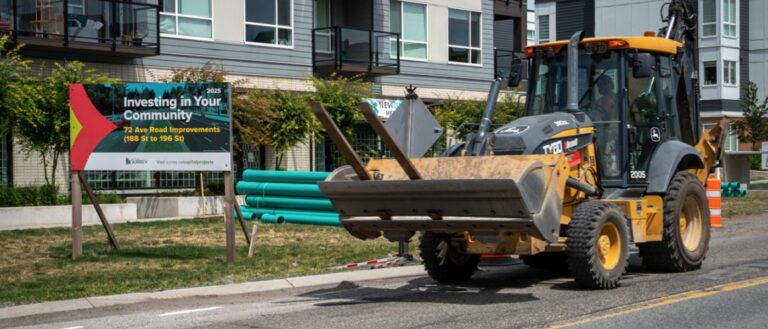Focusing on infrastructure spending is Chapter One in the economists’ playbook for stimulus in times of economic crisis and recovery. Large and small construction projects get people working, flow money to local economies, and create assets that serve communities for years to come across all sectors.
However, where Canada and its economy could benefit most right now could be increased stability and certainty around how these infrastructure initiatives are funded and procured, as opposed to significant new dollars. Without doubt, post COVID-19 recovery will fundamentally change many sectors of the economy. For the infrastructure sector, transformation can be for the better.
Limiting Short-Term Damage
In the short-term, governments should limit damage to infrastructure and construction companies from any slowdown in activity. The industry is particularly vulnerable as companies rely on winning projects to stay viable and keep cash flowing through the supply chain to large numbers of small and medium sized subcontractors. Scaling back up to deliver on their commitments does not happen overnight.
It is a difficult balancing act. Most provincial and municipal governments have kept construction sites open, with additional guidance on how to keep sites safe, and ramping up inspections. Construction companies must continue to go above and beyond in providing the best workplace safety conditions and equipment to repay that trust and be true corporate leaders during this time of duress.
Cash flow is the immediate concern. Public agencies could maintain existing payment schedules and work with contractors to make up time. Governments could also front load payments for projects as an interim measure, mirroring aspects of 2008 with key infrastructure stimulus programs like the Knowledge Infrastructure Fund.
Governments also need to collaborate on clear project criteria and selection, favouring effective business plans in line with the scale of the project, and not let inter-jurisdictional politics get in the way of funding. Lower risk small projects do not require the same level of scrutiny as billion-dollar project plans, and government scorecards should prioritize projects that are “shovel ready”. Auditing and red flagging funded projects can be used to ensure money is being well spent.
Ensuring momentum on everything that can still be done remotely is critical. Planning, design, and procurement can still move forward so there are projects ready to go. For certain types of projects public agencies could consider bundling projects or prequalify bidders and award chunks of work over the construction season as they already do in places like Vancouver.
Perhaps the most effective stimulus governments could provide would be to reach a quick resolution around pandemic related costs and delays on projects currently underway. Once normal life resumes the possibility of the virus rebounding will hang over future infrastructure projects and will make it difficult to price work and get insurance. Governments could play a role in backstopping this future risk.
Enabling Transformation
When Canada’s economy has a chance to consider a recovery stage, it may be a time for the federal and provincial government to grapple with some of the industry’s structural challenges. A major source of uncertainty and instability is the cyclical nature of construction, with spending rising and falling with political cycles. This can hold companies back from hiring and investing in people and equipment.
The UK and Australia started tackling this through comprehensive audits of the state of their national infrastructure. This analysis was the basis for developing long-term multi-year infrastructure plans and publishing project pipelines annually. Future forward, projects could be categorized so resources could be shifted to respond to a severe climate event or future health crisis.
Public sector agencies could also overhaul their procurement processes and cut out any unnecessary requirements. Procurement could move away from lowest price, which breeds confrontation, invites poor quality, and hinders innovation. More projects should use innovative approaches including public-private partnerships. Greater attention to the lifecycle performance of projects would be a start and provide an opportunity to evaluate projects against environmental performance and resilience metrics to help deliver on broader government priorities.
Lastly, the construction industry is still powered by paper and long overdue widespread digitization to make it more efficient and resilient is important. Once Toronto stopped issuing construction permits, it was only a matter of time before projects ground to a halt. Finland issues 95 per cent of building permits digitally, making licensing more efficient and transparent. The current disruption demonstrated by the reliance on paper and physical inspections could provide a platform to reimagine all processes involved in moving a project from idea to operational asset.
The biggest impediment to ramping up construction in markets like Ontario and British Columbia is a shortage of skilled labour. Providing funding for skilled trades development and leveraging major projects to bring through apprentices should be a priority. The shift in workplace practices to make sites cleaner and safer, and a shift towards leveraging technology, could also help to attract more people into the industry.
Crisis Brings Opportunity
What companies need more than anything is certainty, especially at this moment in time. Anything the government can do to help cash flow and quickly resolve contractual issues would be most impactful in the short term. For the longer term this could an opportunity to transform the sector to make it more resilient, and efficient, and to benefit more from funding already committed. Canada will likely be rewriting many chapters in the economists’ playbook to recover from COVID-19 and it provides a transformational opportunity to reduce future soaks for this critical sector.
Genevieve Young is the President and COO of Global Public Affairs. John Allen is a vice president at Global Public Affairs.











